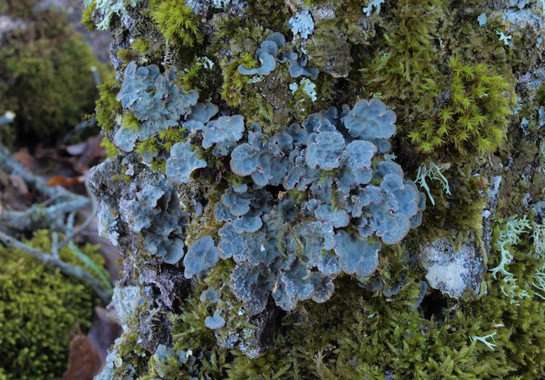The lichen that changes its reproductive strategy according to the climate

Symbiosis between fungi and microalgae gives rise to lichen. Some lichen, however, such as Lobaria scrobiculata, have a unique feature: The fungus establishes a symbiosis with a cyanobacteria, thus requiring water in liquid form to activate photosynthesis. According to a new study, this forces the lichen to concentrate its resources on reproduction in places where water is scarce. For the first time, this study demonstrates the theory of life strategies in fungi.
The Lobaria scrobiculata lichen is unique. Unlike the majority of lichen with green microalgae, which use environmental humidity to activate their photosynthesis, this species requires liquid water in symbiosis to activate the cyanobacteria living in it. This makes it special, although it is not its only unique property.
A study, published in the journal Annals of Botany, reveals how this organism changes its reproductive strategy depending on whether or not there is rainfall. Thus, in dry places, this tree-dwelling lichen starts to reproduce in smaller volumes with greater intensity.
"We believe this is a response strategy to water scarcity," said Sonia Merinero, a researcher from the Rey Juan Carlos University (Madrid) and the University of Stockholm (Sweden), and the main author of the study.
In adverse environments with less rainfall, the lichen could be ensuring the persistence of its populations by means of early and intense production of reproductive structures which free small fragments of fungus and cyanobacteria which are dispersed together (soredia). "On the other hand, in rainy places favourable to the species, the lichen can thrive without reproducing as early, nor very intensely," the scientist said.
In total, researchers analysed 9,665 lichens in 18 populations of Lobaria scrobiculata across 800 km, spanning the Iberian Peninsula. "We measured the size of each lichen in all populations and estimated its reproductive effort. By doing so, we calculated the reproductive threshold in each population, the minimum size required for a lichen to start reproducing with 50% probability," Merinero said.
The sexual life of fungi
The results also proved the theory of life strategies devised for sexually producing plants and animals for the first time. "This predicts how, in adverse environments, plants and animals with undetermined growth, such as fish and insects for example, start reproducing in smaller volumes with a greater reproductive effort, guaranteeing their offspring in those adverse environments," the researcher said.
Until now, this theory has never been proved in fungi, and lichen are organisms which arise from a symbiosis between a fungus (mycobiont) and one or several green algae or cyanobacteria (photobionts). "What is curious about this and many other species of lichen is that it also reproduces asexually, indicating that the theory is versatile enough to also explain asexual reproductive strategies," Merinero said.
Just like sexual reproduction in plants, this type of asexual reproduction is based on the production and dispersion of individual propagules (part of an organism which is produced sexually or asexually) which behave like seeds, and which does not share any similarities with clonal reproduction in plants, such as reproduction using stolons.
These conclusions broaden our knowledge on reproductive strategies in lichen, "organisms whose biology and ecology we still know little about, although they are found in all land ecosystems and carry out important ecological functions," the scientist concluded.
More information: Sonia Merinero, Marcos Méndez, Gregorio Aragón & Isabel Martínez. "Variation in the reproductive strategy of a lichenized fungus along a climatic gradient" Annals of Botany 2017.
Journal information: Annals of Botany
Provided by Plataforma SINC



















